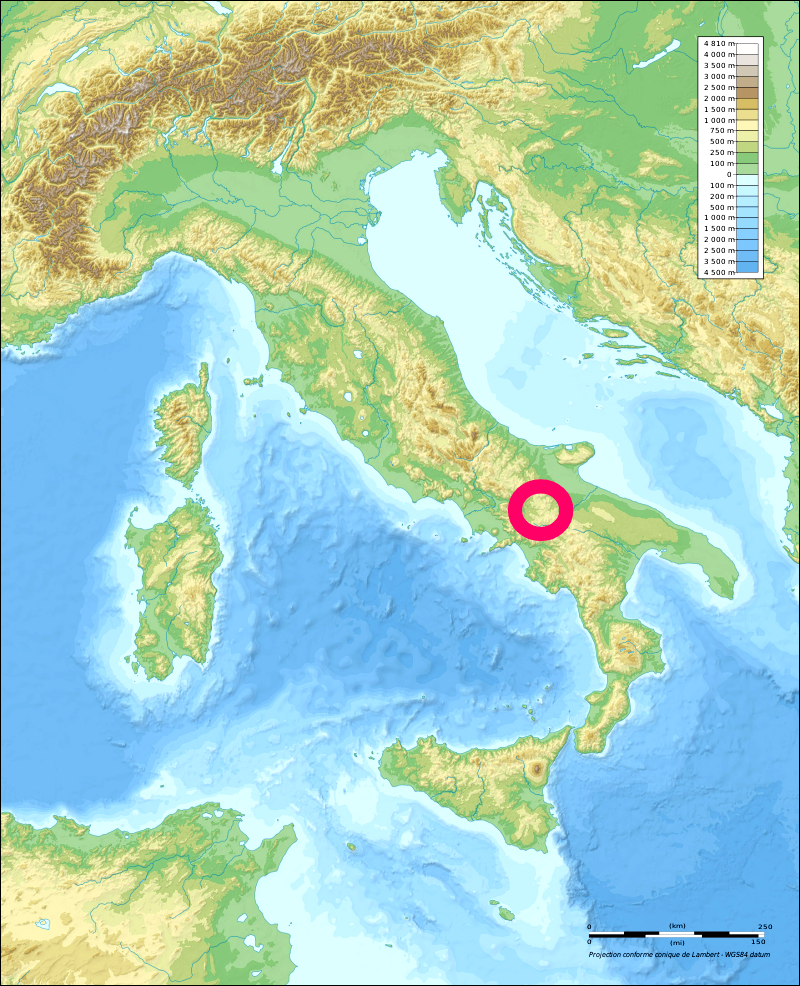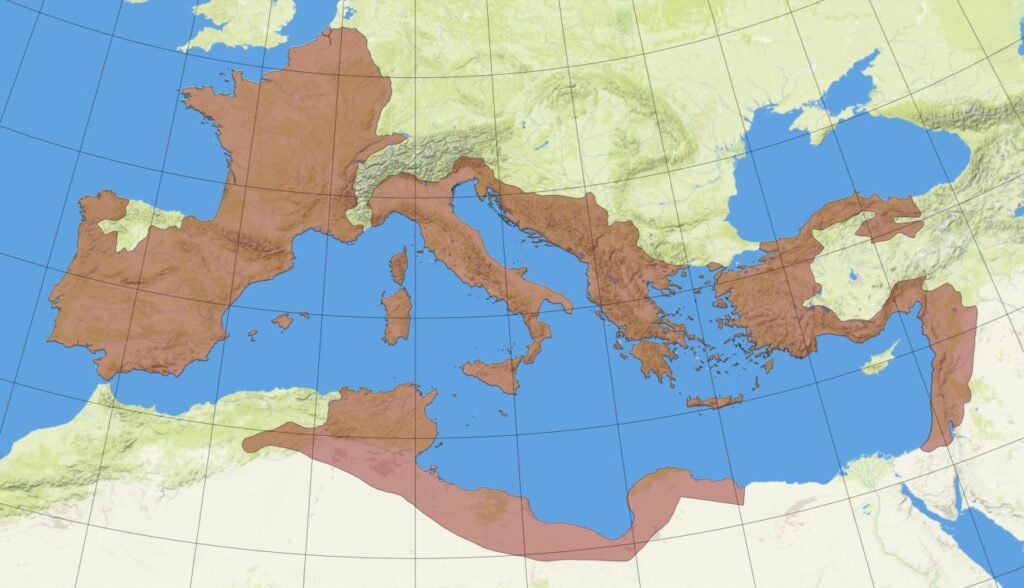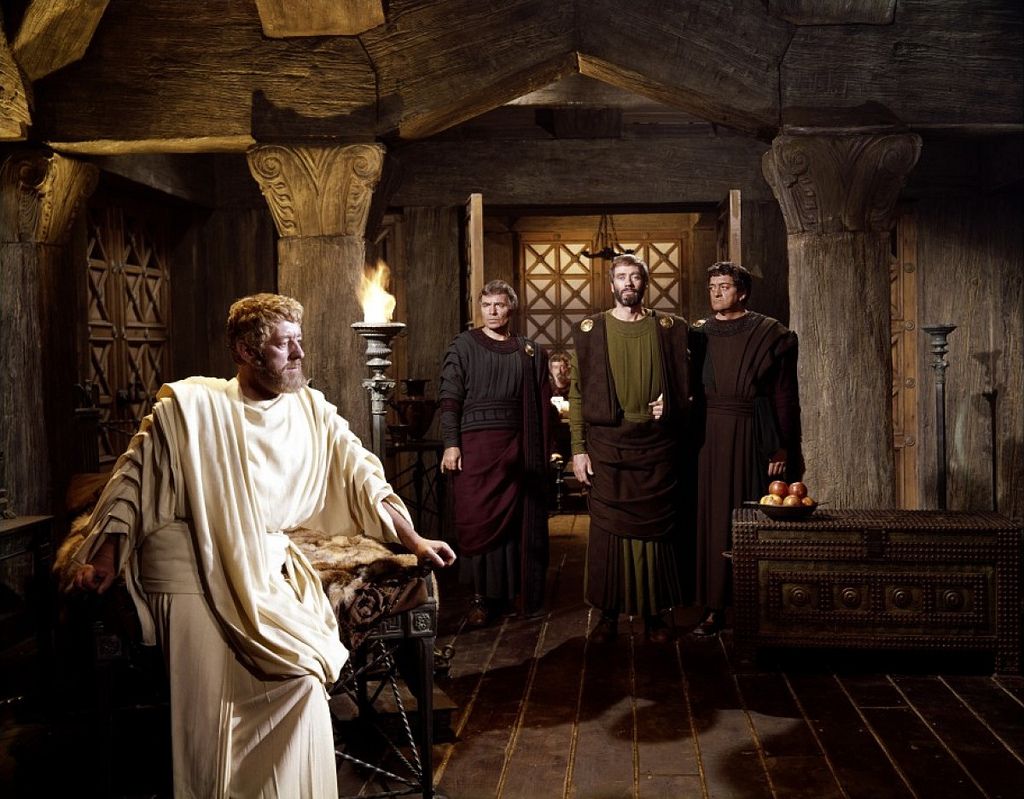
Hey, alphabet adventurers! Ever stopped to think about the humble letters we use every single day? We type them, write them, and barely give them a second glance, right? But what if I told you that the very first letter of our alphabet, the magnificent ‘A’, has a backstory so epic, so full of twists and turns, it could rival any blockbuster movie? Get ready, because we’re about to dive deep into the mind-blowing history of ‘A’ – and trust us, it’s a wild ride!
Forget everything you thought you knew about this letter. It’s not just a simple stroke and crossbar; it’s a living, breathing artifact of human communication, carrying echoes of ancient civilizations, artistic revolutions, and phonetic shifts that shaped how we speak and read today. From its earliest whispers in the desert sands to its commanding presence on your screen, ‘A’ has seen it all, changing its outfit more times than a celebrity on a red carpet.
So, buckle up! We’re going to explore 14 incredible chapters in the life of the letter ‘A’, starting from its absolute beginnings. Prepare to be amazed by the sheer ingenuity of our ancestors and how a single symbol could evolve into such a versatile cornerstone of language. Ready to get schooled in the coolest history lesson ever? Let’s kick things off with where it all began!

1. The Proto-Sinaitic Origins of ‘A’: From Ox-Head to Alphabet Pioneer
Imagine a time long, long ago, when writing wasn’t about sleek fonts or tiny screens, but about drawing pictures! That’s right, our journey with ‘A’ begins with a literal picture. The earliest known ancestor of A, believe it or not, may have been a pictogram of an ox head. This wasn’t just any random doodle; it was part of the proto-Sinaitic script, a fascinating early writing system that was heavily influenced by Egyptian hieroglyphs. Talk about ancient roots!
Picture this triangular head with two horns extended – that’s the ancestral vibe we’re talking about! It’s incredible to think that a symbol designed to represent something as concrete as an ox, an animal vital to ancient agrarian societies, would eventually morph into the abstract letter ‘A’ we recognize today. This transformation from a clear image to a more symbolic representation is one of the coolest parts of language evolution.
This proto-Sinaitic ox head pictogram wasn’t just cute; it was functional. It was the genesis of a system that would eventually break free from purely pictographic representation, paving the way for alphabets that could represent sounds rather than just concepts. It’s the ultimate glow-up story for a symbol, going from “Moo!” to “A is for Awesome!” in a few millennia.

2. Phoenician Aleph and the Glottal Stop: When ‘A’ Was a Silent Star
Alright, so our ox head pictogram evolves into something a bit more refined in the Phoenician alphabet. Here, it transforms into “aleph,” which actually means “ox” in Hebrew, keeping that bovine connection alive! But here’s where it gets really interesting: in the Phoenician alphabet, aleph didn’t stand for a vowel sound like /a/. Nope, it represented a glottal stop [ʔ].
For those of us who aren’t linguistics buffs, a glottal stop is that quick, abrupt sound you make in the middle of “uh-oh.” It’s a pretty important sound, but in Phoenician, which only used consonantal letters, it was just another consonant. So, our beloved ‘A’ was playing a different game back then, silent but powerful, marking a specific kind of consonant sound.
This is a pivotal moment in the ‘A’ saga. It shows us how cultures adapt and tweak writing systems to fit their linguistic needs. The Phoenicians were master traders, and their efficient consonantal alphabet spread like wildfire, becoming the grandparent to many other writing systems, including the one that eventually gave us ‘A’ as a vowel. Pretty wild to think about, right?

3. The Greek Transformation to Alpha: Hello, Vowel Power!
Enter the ancient Greeks! When they got their hands on the Phoenician alphabet, they were like, “Okay, this ‘aleph’ thing for a glottal stop? We don’t really need that. But you know what we *do* need? Vowels!” And just like that, history was made. The Greeks adapted the sign to represent the vowel /a/, calling the letter by the similar name alpha.
This wasn’t just a minor tweak; it was a revolution! The Greeks, in their infinite wisdom, basically invented the vowel system as we know it, making their alphabet incredibly efficient for recording their complex language. Imagine trying to read Greek philosophy or epic poetry without vowels – it would be a nightmare! Alpha became the shining star of their vowel lineup.
And here’s a fun visual: in the earliest Greek inscriptions, dating to the 8th century BC (right after the Greek Dark Ages – dramatic!), the letter rests upon its side. It’s like ‘A’ was just chilling, taking a break. But don’t worry, it eventually straightened up, generally resembling the modern capital form. Though, because ancient Greeks loved variety, many local varieties can be distinguished by the shortening of one leg, or by the angle at which the cross line is set.

4. Etruscan and Roman Adaptations: ‘A’ Goes to Italy!
After its star turn in Greece, ‘A’ wasn’t done traveling. Next stop: the Italian Peninsula! It was the Etruscans who played courier, bringing the Greek alphabet to the Italian Peninsula, and left the form of alpha unchanged. And guess what? The Etruscans were pretty chill about it; they left the form of alpha largely unchanged. “If it ain’t broke, don’t fix it,” right?
But then came the Romans, and these guys were *everywhere*. When the Romans adopted the Etruscan alphabet to write Latin, the resulting form used in the Latin script would come to be used to write many other languages, including English! This was a HUGE deal because the Latin script, as we know, would go on to be used to write a gazillion other languages – including, you guessed it, English!
Think about that for a second: the ‘A’ you’re reading right now, the ‘A’ on your keyboard, has a direct lineage through Roman scribes, Etruscan innovators, and Greek scholars, all the way back to an ox’s head. It’s like a linguistic relay race, and ‘A’ has been a star athlete for millennia. Pretty cool, huh?

5. Monumental and Cursive Roman Styles: ‘A’ Gets Dressed Up (and Down)!
So, ‘A’ is now rocking the Roman world, but it wasn’t a one-size-fits-all situation. During Roman times, there were many variant forms of the letter A. We’re talking variant forms, people! First up was the monumental or lapidary style, which was used when inscribing on stone or other more permanent media. Think grand inscriptions on temples or monuments – ‘A’ was looking sharp and imposing.
But let’s be real, you can’t be chiseling away at stone for your grocery list. So, there was also a cursive style used for everyday or utilitarian writing, which was done on more perishable surfaces. Because, well, things perish, there are not as many examples of this style as there are of the monumental, but there are still many surviving examples. This shows us ‘A’ could be both formal and incredibly practical.
It’s like ‘A’ had its formalwear for state dinners and its comfy sweats for chilling at home. This early divergence in styles is a testament to the versatility and adaptability of the letter, proving it wasn’t just a pretty face but a hard worker, too, ready for any occasion the Romans threw its way.

6. The Flourishing of Roman Cursive: A Deep Dive into Roman Handwriting
You thought Roman cursive was just “cursive”? Oh honey, no. The Romans were serious about their handwriting, and within the broad category of cursive, ‘A’ had even *more* looks! The context spills the tea on several surviving examples, revealing different types of cursive, such as majuscule cursive, minuscule cursive, and semi-cursive minuscule. It’s like a whole wardrobe dedicated to ‘A’!
These different cursive styles weren’t just random; they served various purposes and evolved over time, reflecting the changing needs and aesthetics of Roman scribes. Majuscule cursive would have been earlier and more formal, while minuscule and semi-cursive minuscule likely represent later, more efficient, and perhaps faster ways of writing. It really drives home the point that ‘A’ was a letter in constant motion, always adapting.
It’s fascinating to ponder how these everyday writing styles shaped the future of our alphabet. While the monumental forms were preserved on stone, these perishable cursive documents are gold mines for understanding the dynamic evolution of letterforms. They show us ‘A’ was a chameleon, effortlessly shifting its appearance for whatever daily task needed it.

7. Early Medieval Transcriptions: ‘A’ Bridges Ancient and New Worlds
As the Roman Empire began its long goodbye, ‘A’ wasn’t about to disappear. Instead, it entered a fascinating transitional phase, bridging the monumental Roman styles with the burgeoning scripts of the early medieval period. The context highlights that “Variants also existed that were intermediate between the monumental and cursive styles.” These weren’t just placeholders; they were crucial stepping stones!
We’re talking about forms like the early semi-uncial (c. 3rd century), the uncial (c. 4th–8th centuries), and the late semi-uncial (c. 6th–8th centuries). Each of these styles represents a specific moment in time where scribes were experimenting, refining, and evolving the letter ‘A’ for legibility and efficiency in manuscript production.
The uncial script, for example, is particularly recognizable for its rounded, capital-like letters, often used in luxurious religious manuscripts. It’s in these variations that we see ‘A’ truly becoming a versatile player, adapting its curves and angles to new writing tools and materials, ensuring its survival and continued evolution long after the Roman legions marched their last. It’s literally watching history being written, one ‘A’ at a time!

8. The Post-Roman Empire ‘A’: A Kaleidoscope of Cursive
Alright, history buffs, we just navigated the Roman Empire’s ‘A’ era, where it had its fancy monumental outfits and its casual cursive wear. But as empires sometimes do, the Roman one started winding down around the 5th century AD. Did ‘A’ just throw in the towel? Absolutely not! This was actually a super cool period of reinvention, especially for its everyday, handwritten forms.
Out of the Roman Empire’s twilight, a whole fashion show of cursive minuscules popped up across Western Europe! This wasn’t a sudden, unified change, but rather a fascinating process where “several variants of the cursive minuscule developed.” Each region started putting its own unique stamp on the letter, reflecting local scribal traditions and linguistic needs, moving away from a singular imperial style.
We’re talking about new styles like the semi-cursive minuscule of Italy, the elegant Merovingian script from France, the distinct Visigothic script of Spain, and the super unique Insular or Anglo-Irish semi-uncial (also known as Anglo-Saxon majuscule) from Great Britain. Imagine ‘A’ getting a whole new wardrobe, tailor-made for different regions and cultures, proving its incredible adaptability during a time of great upheaval.
These weren’t just random scribbles; each variant was an adaptation, a local spin on how to make writing more efficient and beautiful in a post-Roman world. It really shows how dynamic and alive language is, even down to the individual letters. ‘A’ wasn’t content to be a static symbol; it was constantly evolving, picking up new accents and looks as it moved through time and across different hands, ensuring its survival and continued relevance.

9. The Caroline Script: ‘A’ Finds Its Modern Groove
After all that fabulous medieval diversification, the letter ‘A’ was ready for its next big act: standardization! By the ninth century, a true game-changer emerged – the Caroline script. And get this: it was “very similar to the present-day form” of ‘A’! It’s like ‘A’ finally settled on an iconic look that would pretty much stick around, becoming universally recognizable even centuries later.
This wasn’t just another pretty face; the Caroline script was the “principal form used in book-making” for ages, way before Gutenberg decided to invent the printing press. Think about it: without the consistent, super legible ‘A’ of the Caroline script, ancient manuscripts would have been a chaotic mess of different styles, making reading and replicating texts a total nightmare. It literally streamlined communication and helped preserve knowledge across centuries.
So, how did this super-influential script come about? Well, it was a total mashup, “derived through a combining of prior forms.” Scribes basically took all the best bits from the earlier medieval variants – the clear, rounded forms, the efficient strokes – and blended them into one harmonious, easy-to-read ‘A’. This makes Caroline script the ultimate connector, a brilliant synthesis bridging the ancient past with the dawn of modern typography.
The elegance and clarity of the Caroline ‘A’ cannot be overstated. It was a conscious effort to improve legibility and standardize writing across Charlemagne’s vast empire, ultimately making written communication more accessible. It’s no exaggeration to say that without this monumental achievement, our modern alphabet, and thus much of our written history, might look dramatically different. Go, ‘A’, go!

10. Renaissance ‘A’: The Birth of Italic and Roman Glamour
Just when you thought ‘A’ couldn’t get any more stylish, the 15th century in Italy rolls around, bringing with it the Renaissance – and two major typographic superstars! These weren’t just fleeting trends; they’re the “two main variants that are known today,” directly descended from our friend, the clear and balanced Caroline Script. We’re talking about the Italic and Roman forms, baby!
First up, the Italic form, ⟨ɑ⟩. You might know it as “script a” or the “single-decker a,” a term graphic designers affectionately use. This is the one you often see in handwriting, and it’s got a super distinct look: “a circle with a vertical stroke on its right.” It’s an elegant, flowing form that feels perfectly natural to pen.
Here’s a fun fact about its lineage: this particular shape actually “gradually developed from a 5th-century form resembling the Greek letter tau ⟨τ⟩” in the nimble hands of medieval Irish and English writers. Imagine a Greek letter giving birth to a modern Italic ‘A’ – talk about a glow-up with ancient roots and a truly international family tree!
Then there’s the Roman form, ⟨a⟩, the undisputed reigning champion found in “most printed material.” It’s that classic, sturdy, and endlessly readable ‘A’ with “a small loop with an arc over it,” which graphic designers dub the “double-decker a.” Both these iconic forms actually sprang from the same majestic ancestor, the majuscule form ⟨A⟩.
The transformation from the uppercase ‘A’ to the printed Roman lowercase ‘a’ involved some clever design choices. In Greek handwriting, it was common to merge the left leg and horizontal stroke into a single loop, akin to the uncial version. Many fonts then simplified this by making the right leg vertical. For some, the serif that initiated this right leg developed into an arc, giving us the printed form, while in others it was dropped, leading to the modern handwritten style. It’s a journey of simplification and refinement, all leading to the ‘A’ you’re reading right now!

11. The Phonetic Flip-Flop: ‘A’ Gets Vocal (and Versatile)!
Okay, so we’ve talked about ‘A’s looks, but what about its sound? This letter has had a phonetic journey wilder than a rockstar’s tour! Remember way back when ‘A’ started as “aleph” in Phoenician? It was a silent star, representing a “glottal stop [ʔ]” because Phoenician was all about consonants, totally skipping vowels. Imagine a letter that’s technically there but only makes that little throat-catch sound!
Then came the Greeks, who were like, “We desperately need vowels!” So, they gave ‘A’ its voice, transforming it into “alpha” to represent the glorious, open vowel sound /a/. Fast forward to Latin, and ‘A’ truly hit its stride, consistently standing for “the open low back vowel,” what we sometimes call “continental a” in English, like the ‘a’ in “father.” It was the MVP of vowels, loud and proud across the Roman world!
But English, being the wonderfully quirky language it is, decided to throw some major curveballs at ‘A’. During and after the Middle English period, ‘A’s sound underwent “far-reaching changes,” thanks to various linguistic shifts. We got “fronting,” which means pronouncing the sound more toward the front of the mouth, and “rounding,” where you slightly round your lips, causing the sound to be pronounced higher. It’s like ‘A’ started doing vocal exercises!
This means our little ‘A’ now juggles *six* principal vowel sounds in English! It can be its “original value, the low back vowel, as in father.” Then there’s an “intermediate vowel, as in plan.” We also have a “closer vowel, further fronted, as in hare,” which pops up mostly before the liquid ‘r’. And who can forget the diphthong (ei) sound “in take or spade,” which is ‘A’s normal long vowel sound?
And believe it or not, that “hare” sound is actually a cool historical snapshot, representing “a stage in the development of a on its way from 1 to 4 which was arrested at this point when the sound was followed by r.” How neat is that? Finally, due to some “rounding” influences, ‘A’ gives us the vowels in “water” and “was,” the latter influenced by a preceding bilabial spirant. Seriously, ‘A’ is a vocal chameleon, making it one of the most versatile sounds in our language!

12. ‘A’ in the Digital Age: Unicode, Single-Deckers, and IPA
Guess what? Even in our super-modern, digital world, ‘A’ is still evolving, proving it’s never too old for new tricks! We’re talking “typographic variants” that grace our screens every day. You’ve probably noticed that sometimes the lowercase ‘a’ looks a bit different depending on the font you’re using. That’s because we have allographs like the classic “double-storey ⟨a⟩” (the one with the little loop on top) and the sleek “single-storey ⟨ɑ⟩” (just a circle with a tail).
These aren’t just random design choices; they serve specific purposes and reflect the rich history of ‘A’s forms! The “single-story form of a,” often called “script a” or “Latin alpha,” even has its own dedicated Unicode character ⟨ ɑ ⟩, specifically designed for applications like the International Phonetic Alphabet (IPA). This highlights how ‘A’ isn’t just about everyday reading; it’s a precise tool for linguists worldwide, capturing nuances of sound!
And let’s not forget about “Italic type,” where ‘A’ and its alphabet pals lean dramatically to the side! Italic type isn’t just for flair; it’s “commonly used to mark emphasis or more generally to distinguish one part of a text from the rest set in Roman type.” It’s a subtle but powerful way to add visual distinction.
Beyond just the common forms, ‘A’ has a whole digital passport of identities in Unicode. We’re talking about `a U+0061` for the standard Latin small letter, `ᵃ U+1D43` for a modifier letter small A, and even `a U+FF41` for a fullwidth Latin small letter A, often used in East Asian typography. It’s mind-blowing to think about how many ways a single letter can be represented and utilized in our interconnected digital universe. ‘A’ is absolutely owning its digital real estate, showing off its many dazzling looks!

13. ‘A’ Takes Over the World: A Global Language Star!
You’ve seen ‘A’s incredible journey from an ox-head to a modern letter, but how far has it truly reached? Spoiler alert: EVERYWHERE! Thanks to the Roman Empire’s expansion and the subsequent spread of the Latin script, ‘A’ became a global superstar, finding its way into “many other languages, including English” – and a whole lot more, with 188 languages specifically mentioned in its usage!
Seriously, ‘A’ is like the Beyoncé of alphabets, gracing hundreds of languages across the planet. Just thinking about the sheer number of linguistic families and cultures that have welcomed ‘A’ into their writing systems is mind-boggling. It’s consistently “stood at the head of the alphabet during the whole of the period through which it can be traced historically.” That’s major dedication and undeniable staying power!
From European giants like French, German, and Spanish, to Nordic languages like Danish and Icelandic, and even further afield to Indonesian, Tagalog, Swahili, and Yucatec Maya – ‘A’ is there, making its presence known. It’s truly a translingual phenomenon, adapting its phonetic role and typographic form to fit the unique needs of each tongue. This widespread adoption underscores its fundamental utility and flexibility as a linguistic building block.
It’s the ultimate unifier, a foundational element in human communication that transcends borders and epochs. Regardless of where you travel, if a language uses the Latin alphabet, you can bet that ‘A’ is not only present but often leads the alphabetical charge. So next time you type an ‘A’, give a little nod to its incredible global impact – it deserves a standing ovation!

14. The Everlasting A: A Testament to Human Ingenuity
Wow, what a journey! From a simple drawing on ancient sands to the sophisticated symbol we use today, the letter ‘A’ is truly a testament to human ingenuity and our endless quest to communicate. It began as an “ox head,” evolved into a “glottal stop,” then triumphantly transformed into a universal “vowel,” adapting and shapeshifting with every civilization it encountered – proving that even the smallest symbols can carry epic histories.
This wasn’t just some random evolution; every twist and turn in ‘A’s story reflects crucial moments in linguistic and cultural development. The Phoenicians’ innovation in creating a consonantal alphabet, the Greeks’ genius in adding vowels to create efficiency, the Romans’ widespread adoption cementing its place, the medieval scribes’ artistry in refining its form, and the Renaissance’s typographic revolution – each step built upon the last, cementing ‘A’s place as the foundational pillar of countless languages.
From its ancient origins to its modern typographic variants, and its complex phonetic journey, ‘A’ has consistently adapted, showing remarkable resilience. It has transitioned from stone inscriptions to fragile papyrus, from handwritten manuscripts to the digital screen, always finding a way to remain relevant and indispensable. It’s more than just a letter; it’s a living artifact, a bridge connecting us to millennia of human thought and expression.
Read more about: Asia’s Ancient Secrets: Unearthing the World’s Oldest Mummies and a Lost Chapter of Human History
So, the next time you see an ‘A’ – whether it’s in a dusty old book, a vibrant neon sign, or right here on your screen – take a moment to appreciate its epic saga. It’s not just the first letter of the alphabet; it’s a living, breathing piece of history, a tiny symbol with an immeasurable impact on how we think, speak, and connect. The humble ‘A’ truly is awesome, a superstar symbol that continues to shape our world, one word at a time!



